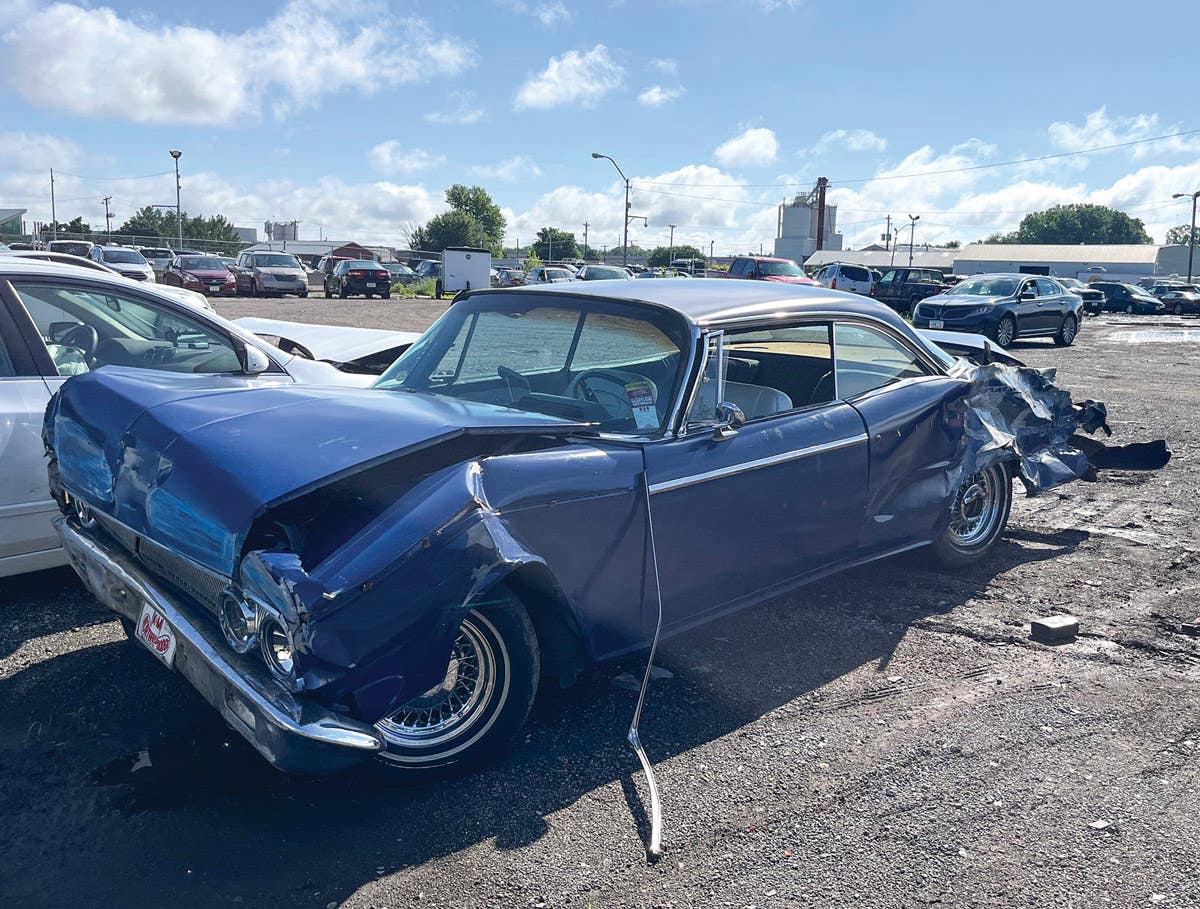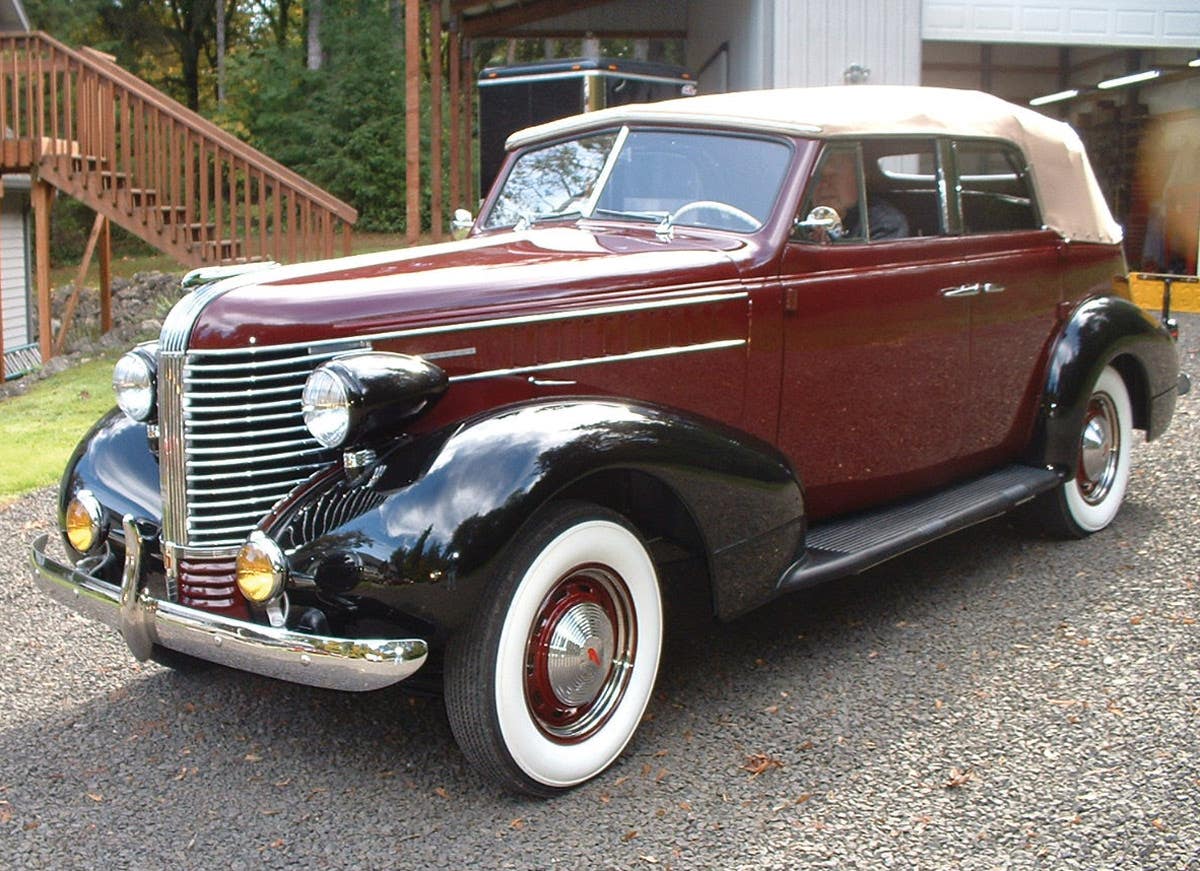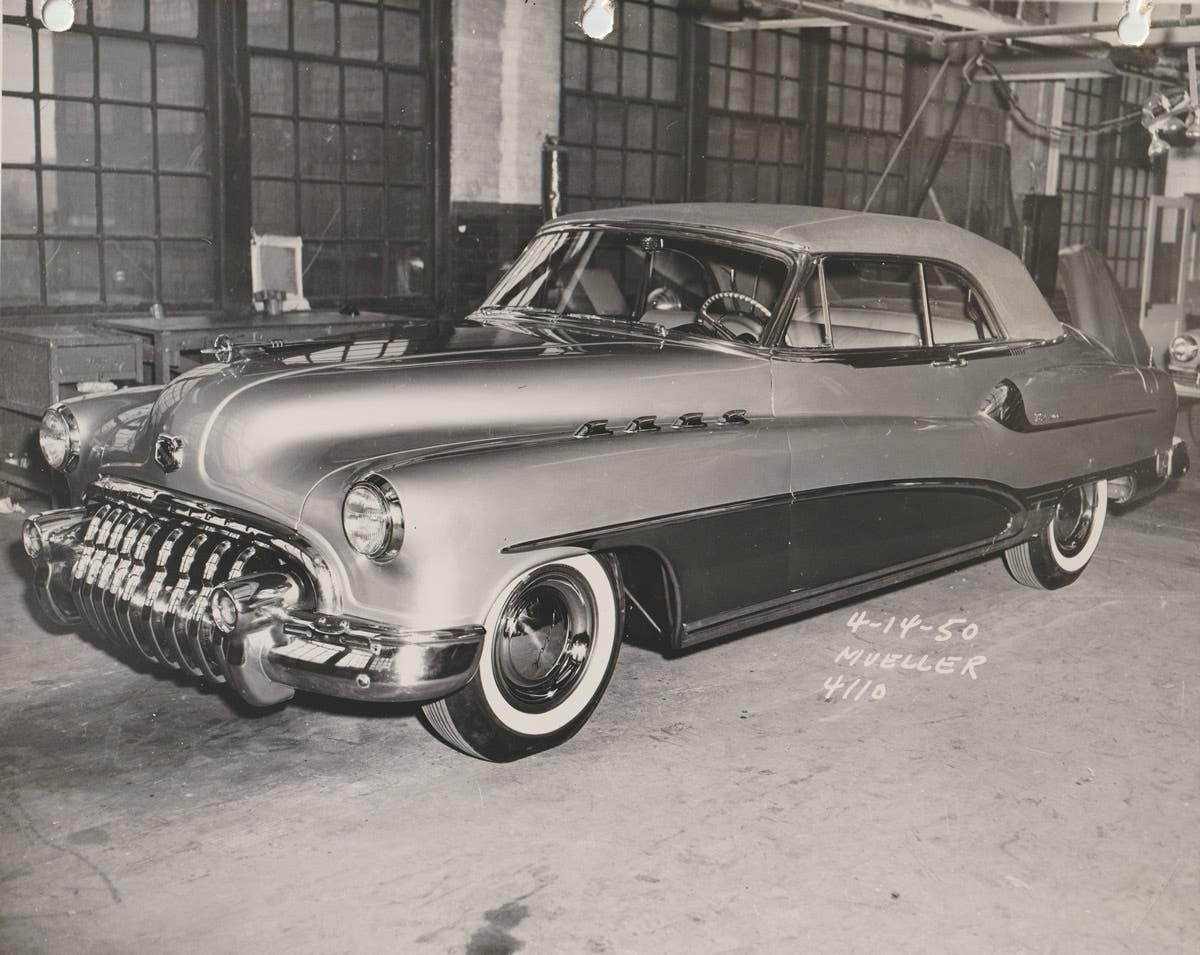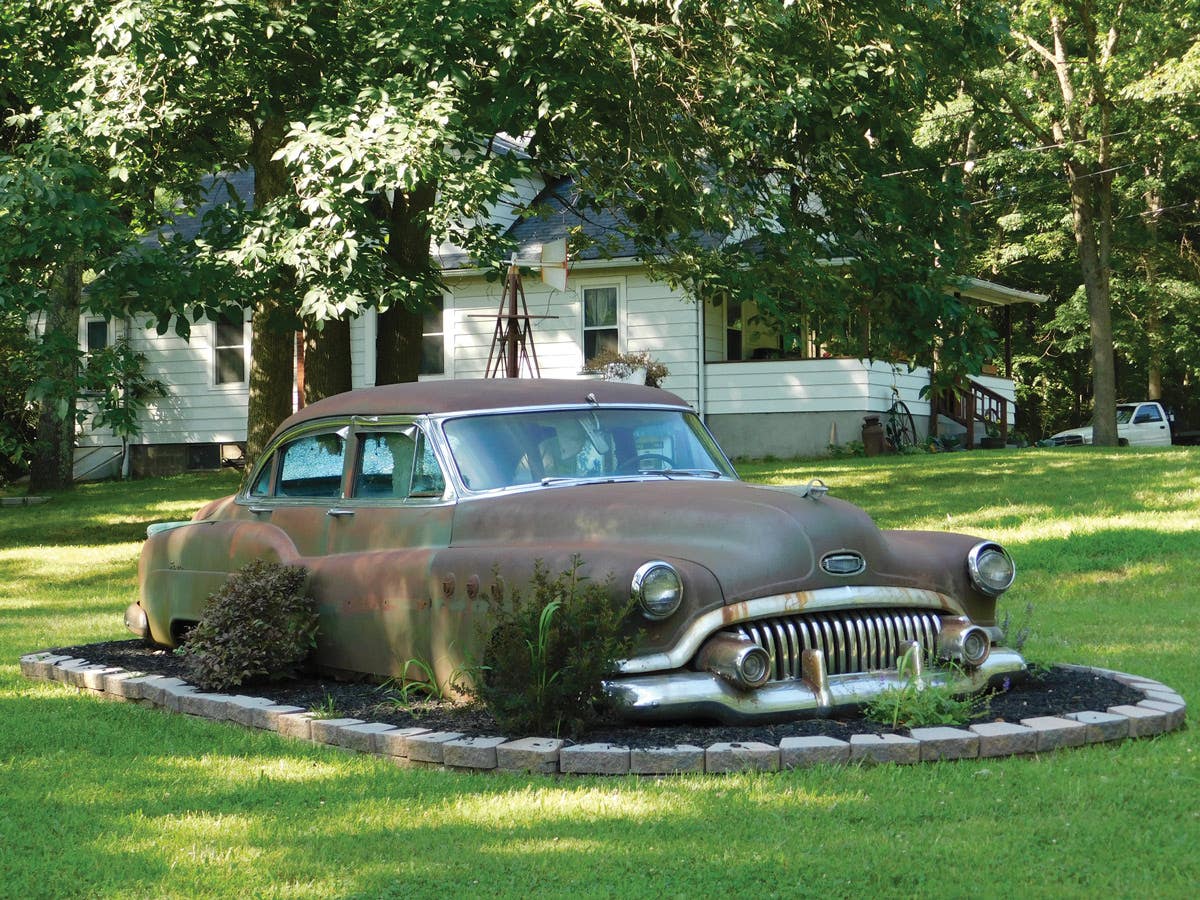Car of the Week: 1957 Ford Thunderbird
Ken Schermitzler had been a “Square ‘Bird” guy for a long time. But he always wanted to be a “Baby ‘Bird” guy.
Story and photos by Brian Earnest
Ken Schermitzler had been a “Square ’Bird” guy for a long time. But he always wanted to be a “Baby ’Bird” guy.
The Green Bay, Wis., resident bought his first Thunderbird — a 1959 convertible — back in 1964 when he was barely old enough to drive. He loved the car and went on to buy another one years later, but he always had a special affinity for the early two-seat cars from 1955 to ’57.
“I had a ’59 for about 30 years, and I always wanted to get a two-seater,” he laughs. “I was 16 when I bought that ’59 convertible, and I got it for 300 bucks. That was in 1964… It belonged to an old lady and she had it sitting in her front yard under a tree, all full of leaves. I was always looking for one because my dad had one. She wanted to get rid of it and she said, ‘For 300 bucks, you can have it!’ All it needed was a new top. The top was ripped in the back and all the leaves were going in it.
“Now it seems like 100 years later I finally got a two-seater!”
He eventually parted with his first ’59, but then bought a second one as a hobby car in about 1980. He enjoyed that second Thunderbird for three decades before he decided to try to fulfill his longstanding ambition to own a first-gen Thunderbird.
Schermitzler found his ’57 through an online posting. The car was located in Santa Ana, Calif., had an old “USC” college sticker in the corner of the windshield and had apparently spent all — or at least the majority — of its life in southern California. “The guy had probably 100 pictures of it, inside and out. Everything front to back was shown in the pictures, so I could see every little scratch or mark that was on it," he said. "I offered them what they were asking, $30,000. They didn’t sell it for that, but I got a call back about two weeks later and he said, ‘If you still want it for that, you can have it.'
“I talked to him several times, and I said, ‘When it gets here I can get in it when it comes off the transport and I can drive it home, right?' 'Oh, certainly! Certainly!’ And I did. When it rolled off the truck it looked brand new.”
Schermitzler has been trying to learn more details about his car’s past, but so far it’s been a bit of a mystery. At some point the car had been at least partially restored and still carried its factory-correct white paint with a black-and-white interior. It had about 106,000 miles on the odometer when it arrived in Wisconsin. Schermitzler has added about 5,000 miles to that total in the past eight or nine years.
“It has the usual automatic brakes, steering, transmission. No power windows, but it does have the power brakes,” he notes. “I put the air conditioning in it, and I also put disc brakes in the front. I just feel a little safer stopping. It came with both tops. The hardtop has got the porthole in it. That’s hanging from the ceiling of my garage. I put that on for the winter. I like the soft top better. I usually ride with it up because it’s a kind of a hassle to put it down, especially if I am by myself. It’s a two-person job to put the top down. I miss that about the ’59. That had a power top.”
“I put radials on it and chrome wire wheels on it. It had the regular steel wheels. I still drive it in every month except January. As long as there is no snow or salt on the road, I drive it, just to keep all the parts moving. I’ve never had a problem with it.”
Under the hood is the optional Thunderbird Special 312 V-8 with a single Holley four-barrel carburetor. It is rated at 245 hp and was one step up the ladder from the base 292-cid/212-hp two-barrel V-8. Further up the food chain was the Thunderbird Super 312 V-8 with dual quads (the “E Code” racing kit 312 listed at 285 hp), and the supercharged 312 “F Code” that topped out at 300 hp.
1957: The Baby ’Bird’s final flight
There were plenty of styling changes to the 1957 Thunderbird, but only minor mechanical alterations. New exterior features included a larger, stronger front bumper incorporating rectangular parking lamps. A larger front grille was said to improve engine cooling. The shape of the front wheel cut outs was modified. Chrome “Thunderbird” name scripts were added to the front fenders, ahead of the louver decorations. Sharp tailfins were added to the T-Bird. A body-side feature line curved up and over the door handles, then swept to the rear atop the outward-canted fins. A higher deck lid had a reverse-angle shape at its rear.
The longer 1957 body provided more luggage space. After being externally mounted in 1956, the spare tire was moved back inside the 6-inch-longer trunk. This made getting into the trunk a lot easier. Ford said that it also helped enhance handling, due to improvements in weight distribution caused by the extra poundage at the rear. The spare tire sat at an upright angle in the trunk’s tire well.
The Thunderbird’s longer, larger, finned rear fenders ended above large round tail lamps. The rear bumper was also enlarged and had more curves than in the past. Built-in exhaust outlets were featured at either side. The license plate was mounted in the center of the rear bumper. A badge on the center of the rear deck lid, shaped like a stylized Thunderbird, identified the model.
The new Thunderbird had a firmer ride than big sedans of its era, due mainly to its shorter wheelbase. However, it was plush, comfortable, and soft riding in comparison to European sports cars. For 1957, the ride was improved through a lowered center of gravity and the use of recalibrated shock absorbers. Five-leaf rear springs were reintroduced after being dropped in favor of four-leaf springs in 1956. Despite the fact that smaller wheels were employed in 1957, the front brakes were enlarged. The smaller new 14-in. diameter safety rim wheels with 7.50 x 14 tires mounted brought the car closer to the ground. They were dressed up with handsome new louvered full-wheel disks.
The 1957 frame was virtually the same as before. However, the number four cross-member was changed to a box section (instead of channel section) design. This provided added strength to support the extra bulk of the bigger body.
The hardtop model was again really a convertible with a detachable fiberglass top. Ford literature still described it as a “glass-fibre standard hardtop.” The standard top had port windows in 1957. Optional at no extra cost was the hardtop without port windows. Both were available in contrasting or matching colors. Some 75 percent of all 1957s had the porthole tops, which had no trim badges. The non-porthole tops featured round emblems with V-shaped Thunderbird insignias. Both hardtops used a revised clamping mechanism. The convertible came with a folding fabric top. Modifications were made to the top mechanism to make it easier to operate.
Two types of fabric tops were offered. The canvas convertible top was available in three colors, while an optional vinyl top came only in one color. Many owners preferred both hard and soft tops. In this case, the convertible model was purchased with the hardtop as a separate option. In October 1956, the Thunderbird was offered in 10 single colors. All 10 colors were also offered on the fiberglass hardtops with specific body and interior color combinations.
Inside, the dashboard had a simulated engine-turned face panel added. The visor above the instrument panel no longer had a transparent “window.” A tachometer was mounted low at the driver’s left and was a bit hard to see. “Idiot” lights monitored oil pressure and the battery’s state of charge.
The seats were redesigned and had separate sections for the driver and passenger. New springs that gave better back support and much improved lateral support were employed. The seats were the same basic size and shape as in 1956, but the new springs were said to reduce driver fatigue. The door panels were also changed. A “Dial-O-Matic” seat was optional. Dash-mounted buttons permitted adjusting the seat to the driver’s favorite position. When the ignition was turned off, it automatically moved to its rearmost position. When the ignition was turned on, the seat moved automatically to the pre-selected driving position.
A new idea in radios was a speed-sensitive receiver. There was an electronic device built into the circuit between the radio volume control and the distributor. It automatically increased volume as the car speed increased. As the engine speed increased, a capacitor wired in series with the distributor lead raised the volume. This maintained the listening level at a constant level at all times and kept the radio from blasting loudly when the car was idling at a traffic light. A safety feature added to the 1957 Thunderbird was a reflecting strip along the rear edge of the left door. When the door was opened at night, headlights from oncoming cars were reflected from the strip, warning drivers of another car’s presence. The doors also had heavier hinges than those used in previous years.
Other standard features included a 12-volt electrical system, dual exhaust, three-speed manual transmission, Hotchkiss drive, ball-joint front suspension, a five-leaf spring rear suspension, five 7.50 x 14 tubeless tires, and Safety-Contoured 14-inch rims.
The base price of a new 1957 Thunderbird convertible was $3,438. The hardtop version ran $3,383. The company had set a production target of 20,000 units, but the ‘57s were popular and orders ran higher than expected. Model-year production eventually hit 21,380. The extended model run allowed Ford to “build out” the two-seat T-Bird and use up parts in inventory before switching to four-seat model production for the 1958 model year.
Ford boasted that the T-Bird had outsold all other sports-type personal cars combined. According to Popular Mechanic’s 1957 Car Facts Book, during 1956, it outsold its principal domestic competitor, the Chevrolet Corvette, by more than 10 to 1. Even though the Corvette had whipped the T-Bird in sports car racing, the T-Bird was the big winner on the boulevards of America. By the time the extended 1957 season came to a close, the three-year total of T-Bird production stood at 53,166 units. That compared to just 14,446 Corvettes built in five years.
“I looked at ‘55s, ‘56s and 57s, and I was in a Thunderbird club and most of the guys recommended I go with the ’57, because they got a little better every year,” Schermitzler says. “In ’57, they made it longer, put the spare inside, gave it a better ride … they did a few mechanical things, gave it better springs. They just improved them a little every year.”
A few hard knocks
Shermitzler wound up selling his 1959 Thunderbird so he could “try to keep this one looking as nice as I can,” but that hasn’t always been easy. He had the car repainted once, then had it touched up again later when some of the lead underneath began to cause some paint issues.
He’s also had to have the car repaired twice after minor mishaps — neither of which were his fault.
On one occasion, Schermitzler had a friend drive the ’59 to a car show so that he could display both cars. When the pair left, the friend accidentally drove the front of the ’59 into the rear of the ’57 at a stop. “I had to fix the front of the ’59 and the rear of the ’57,” Schermitzler says with a chuckle. “That was about $6,000 for both cars.”
A while later, when Schermitzler attended a big national Thunderbird meet at Graceland in Memphis, bad luck came calling again. “They had a special parking lot set up for us with guards and the whole bit… And we were out walking around Graceland and it comes on the loud speaker, ‘Ken Schermitzler, please report to your car.’ Here another Thunderbird had backed into me. An older fella from another club had backed his car into mine. He felt so terrible. He said, ‘That’s it, I’m done driving this car.’ I said, ‘No, no, you keeping driving it; accidents happen.’ …. Graceland felt so bad, they said, ‘We’re gonna let you drive your T-Bird up to the front of the mansion and we’ll park you by the front doors and we’ll take some pictures of your car and make you some nice 8 x 10s.’ So I’ve got come nice photos of it in front of Graceland.”
Schermitzler says that once he got the Baby ‘Bird that he had always dreamed about, his days of looking around for cars were pretty much over. He got the car he wanted, and the experience has been everything he had hoped for.
“It really takes me back to the good old days whenever I drive it,” he says. “My wife [Judy] and I both enjoy it. She was my girlfriend back when I first got the ’59 … I still got her, and I still got a T-Bird!”
__________________
Show us your wheels!
If you’ve got an old car you love, we want to hear about it. Email us at oldcars@aimmedia/com
*As an Amazon Associate, Old Cars earns from qualifying purchases.







